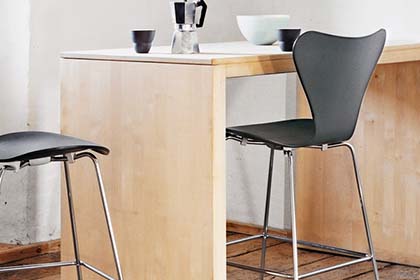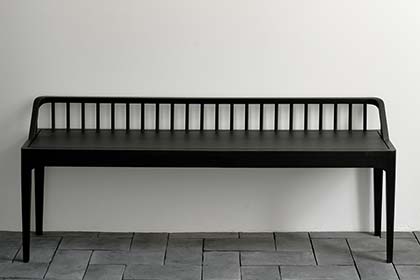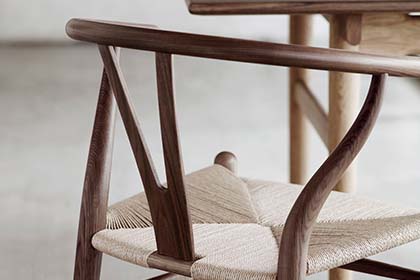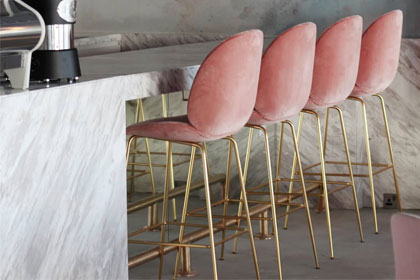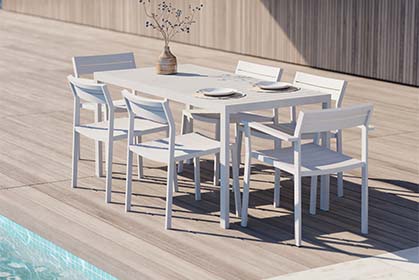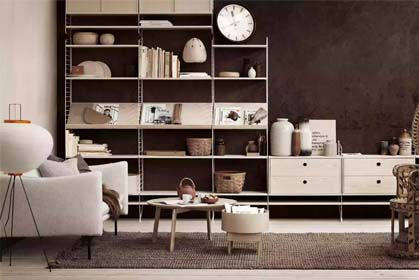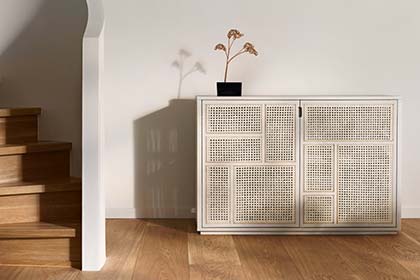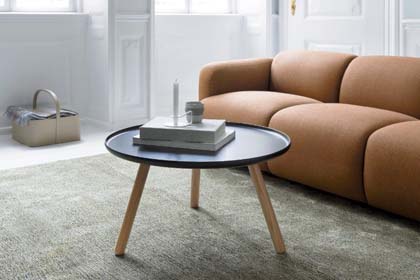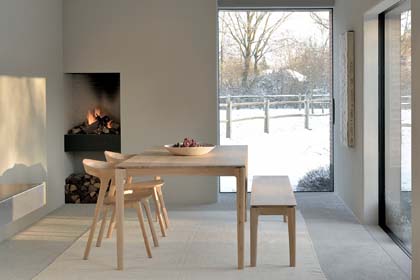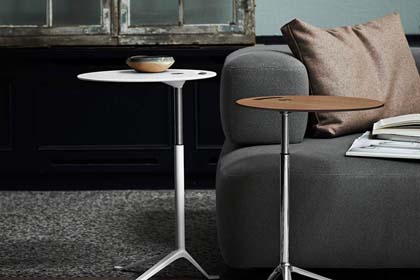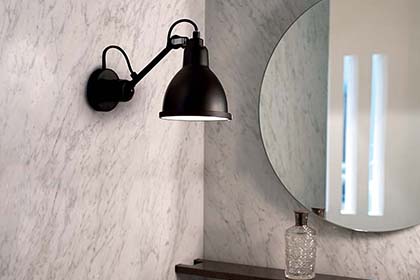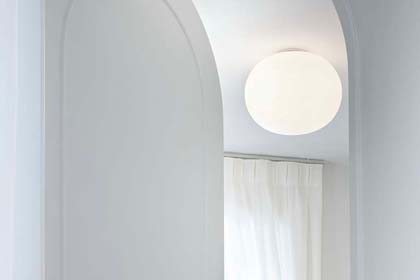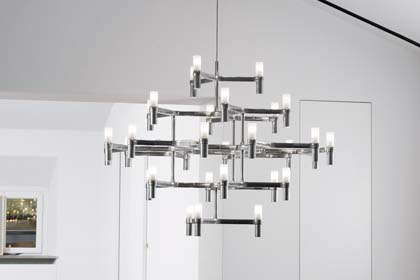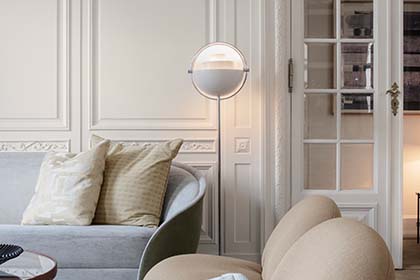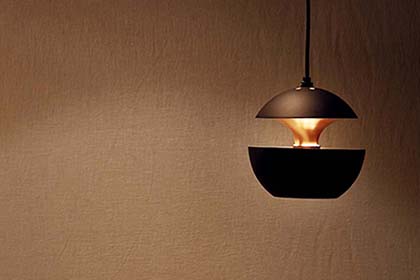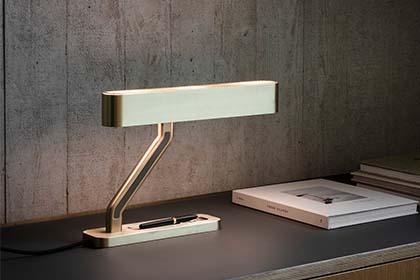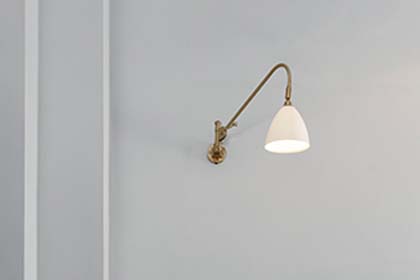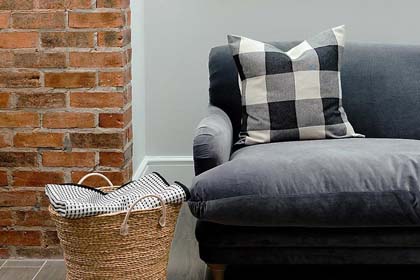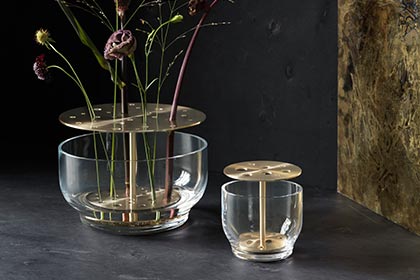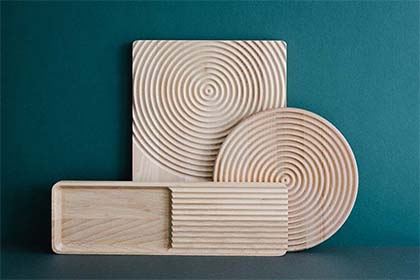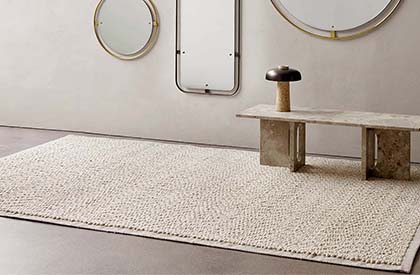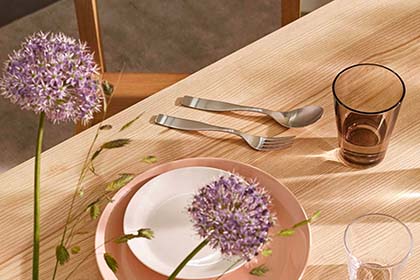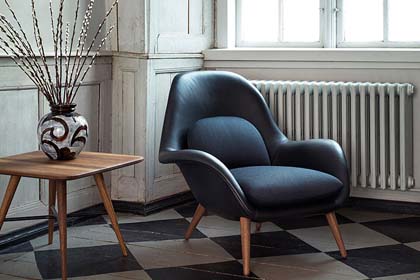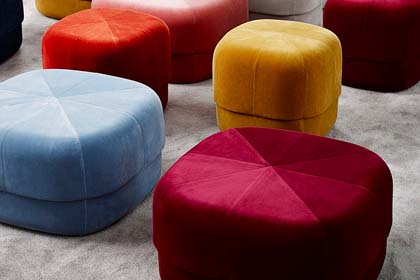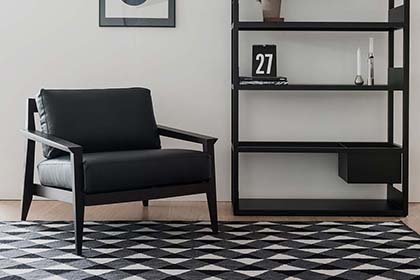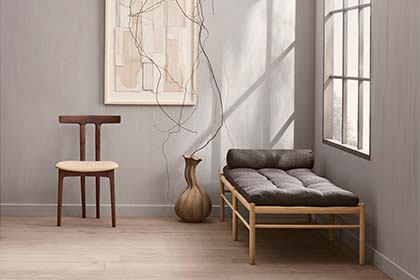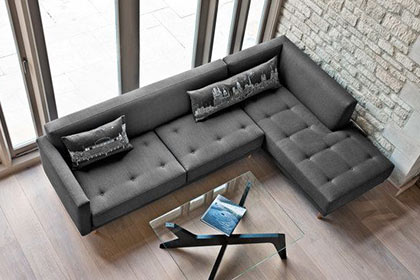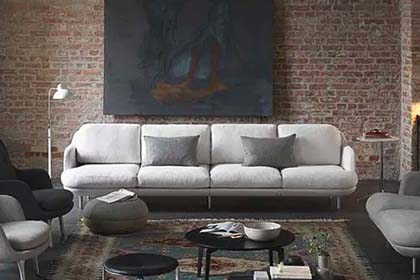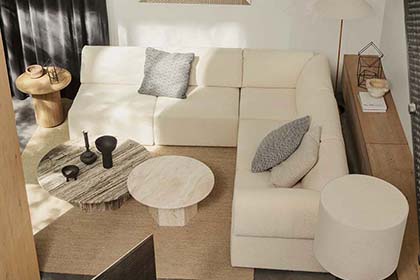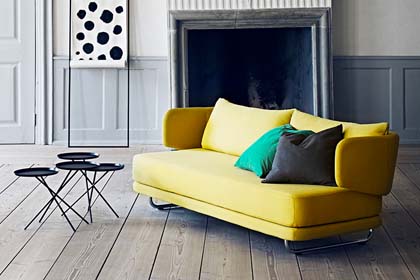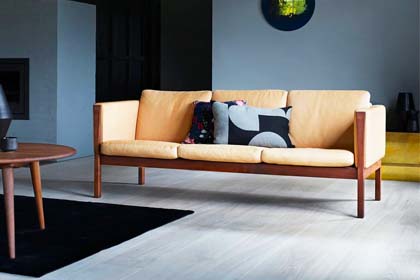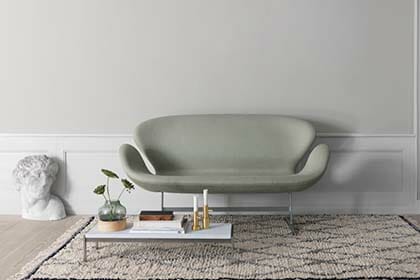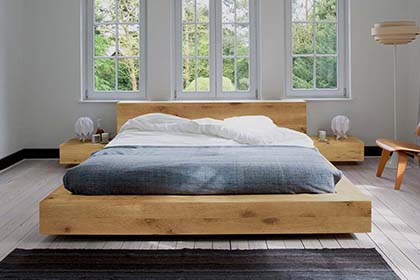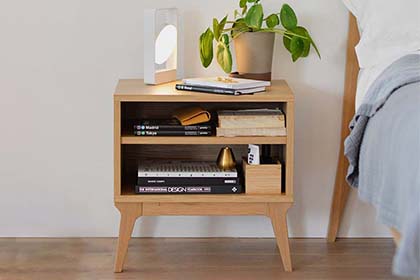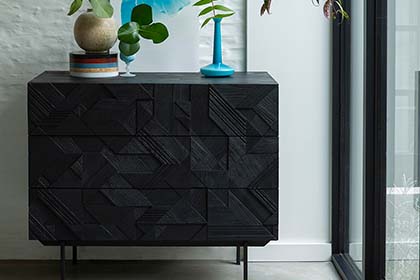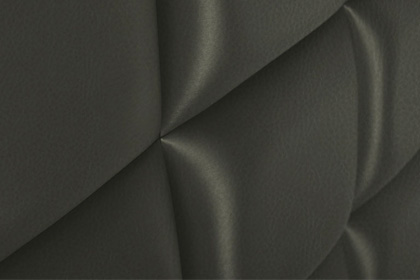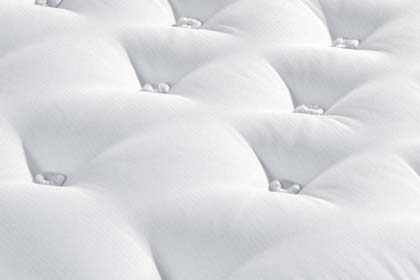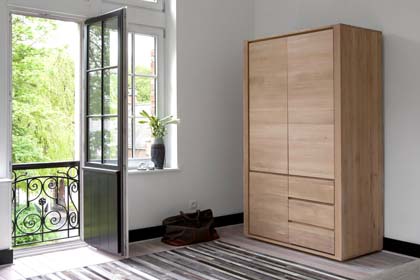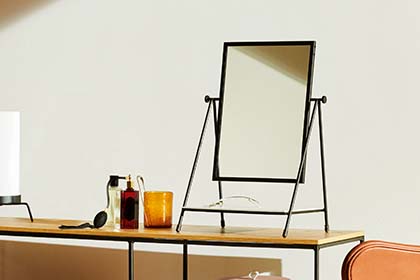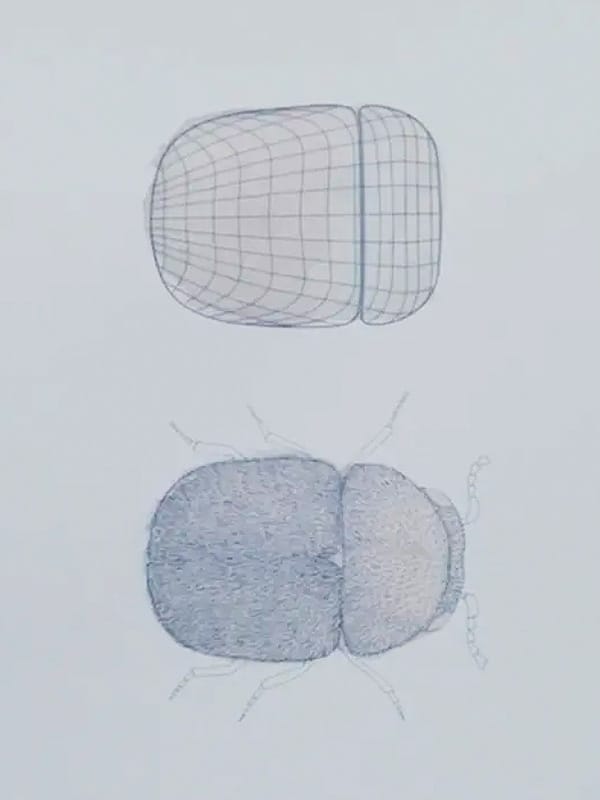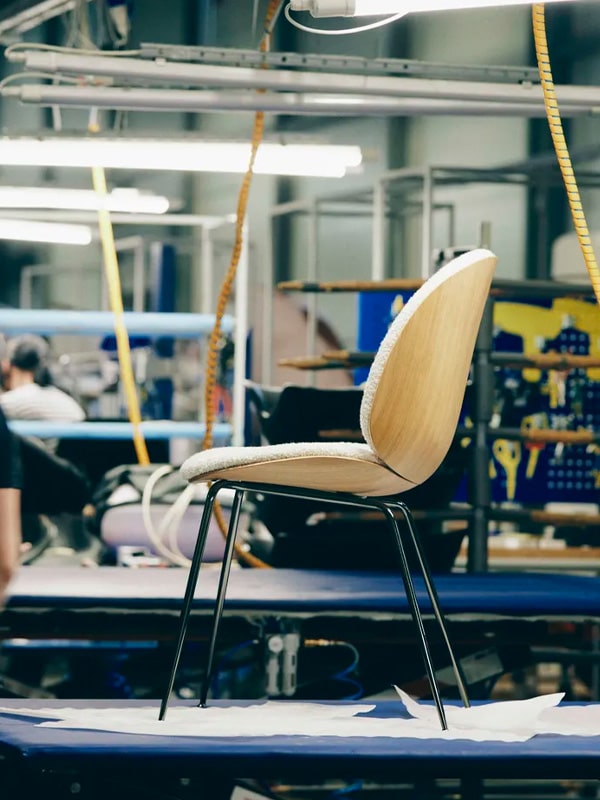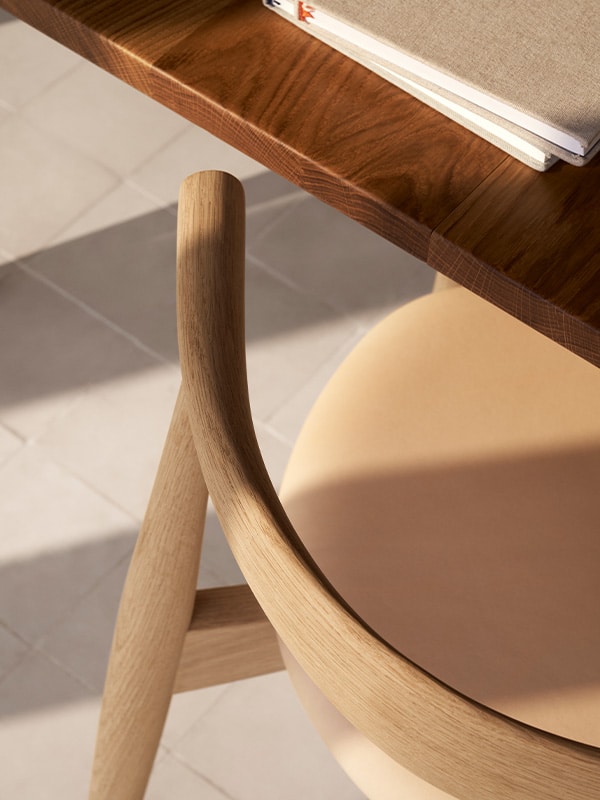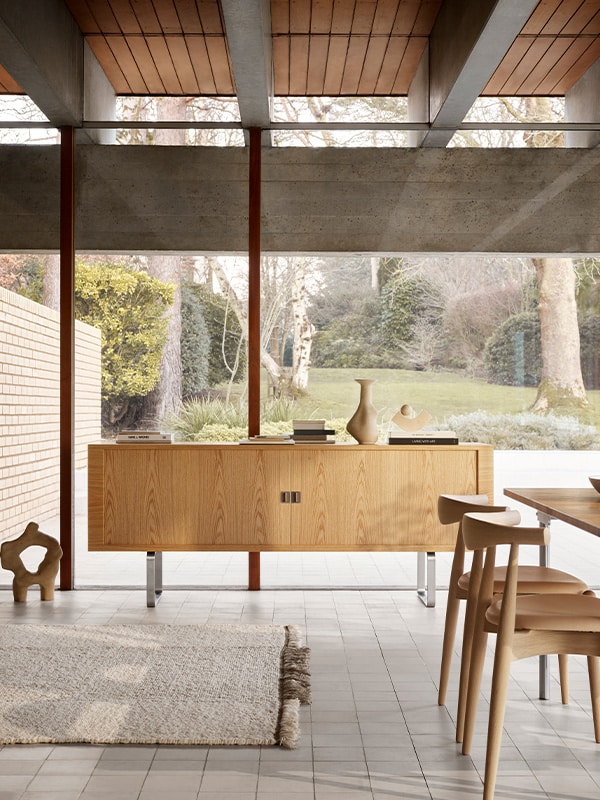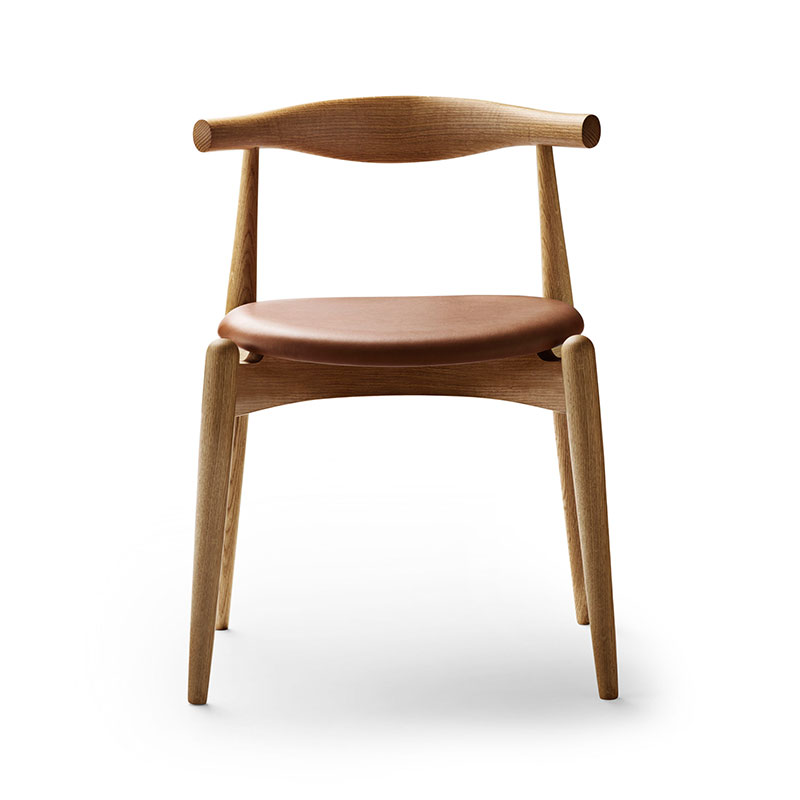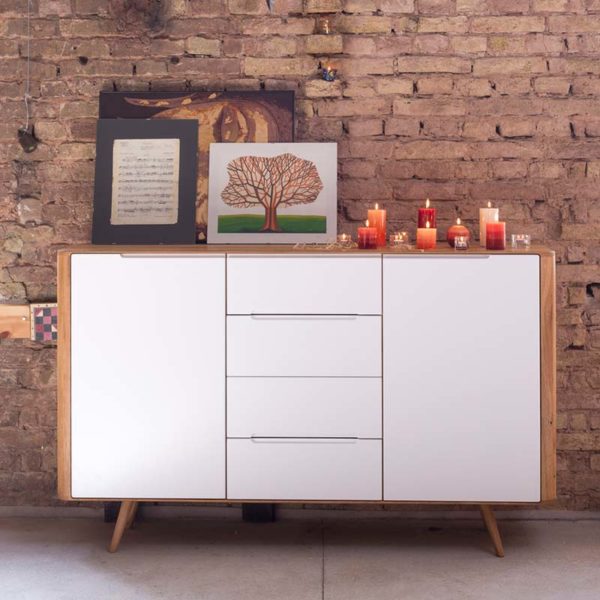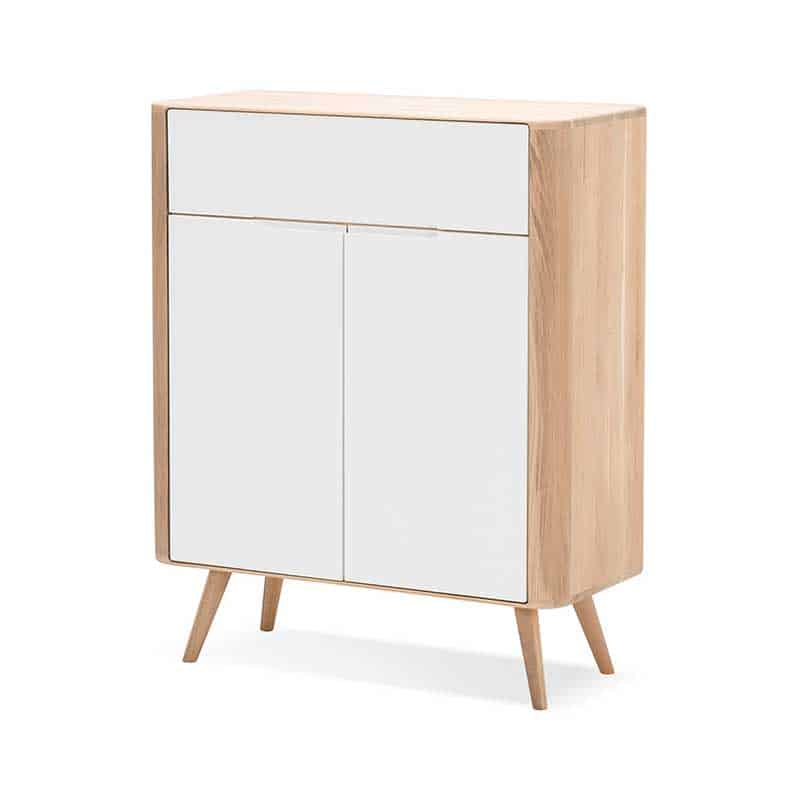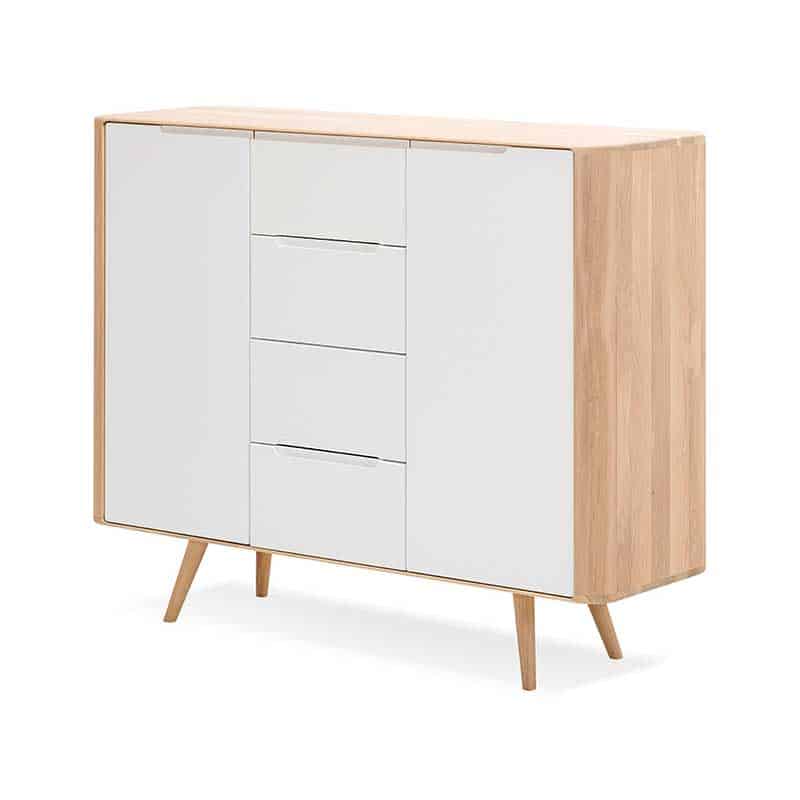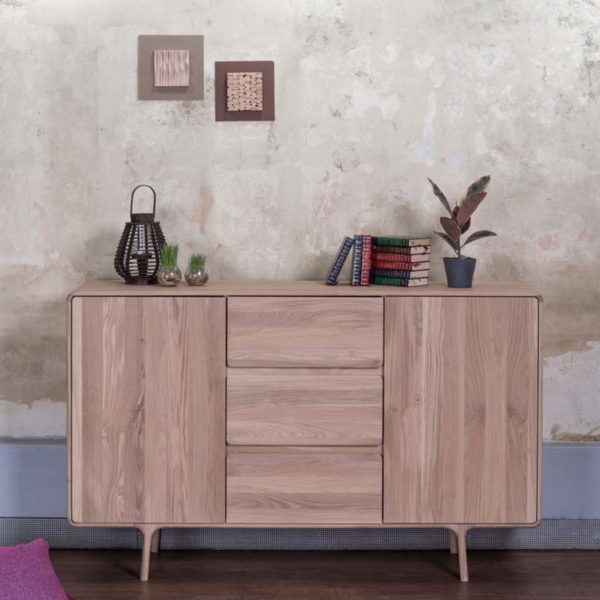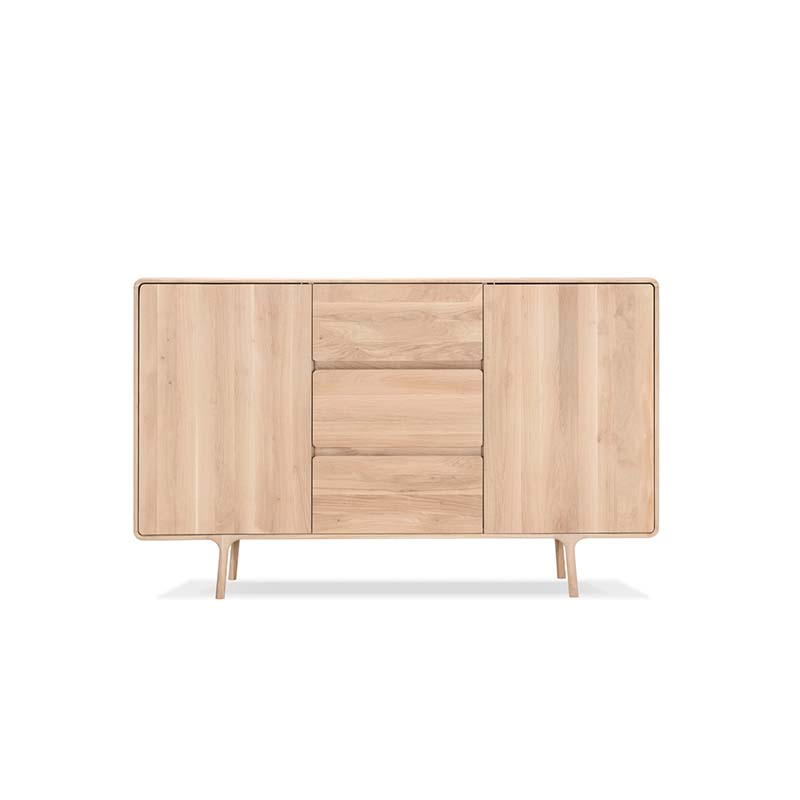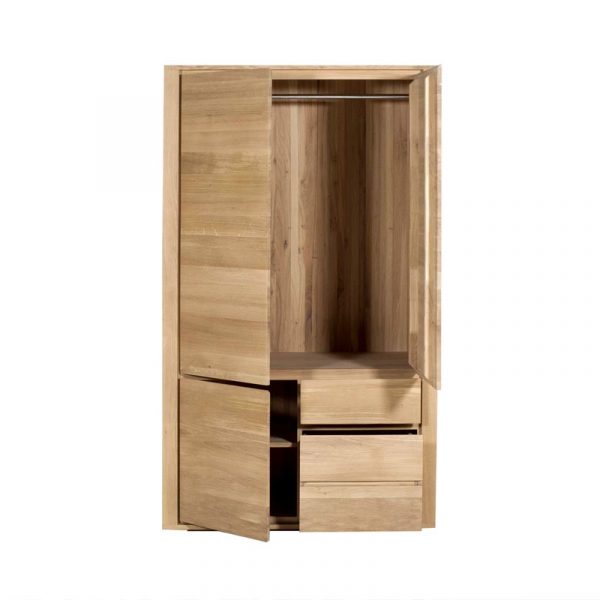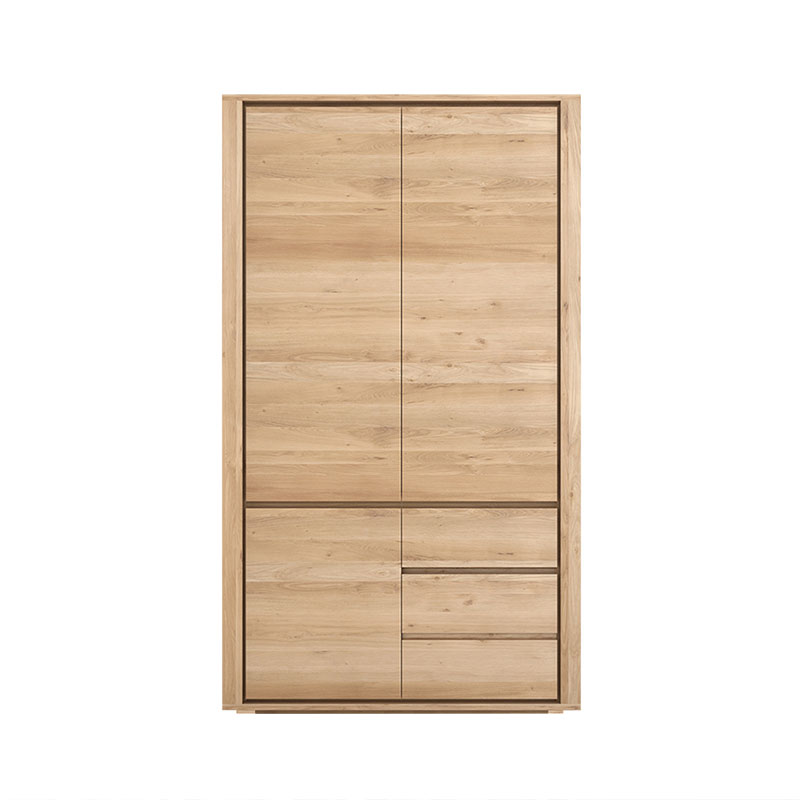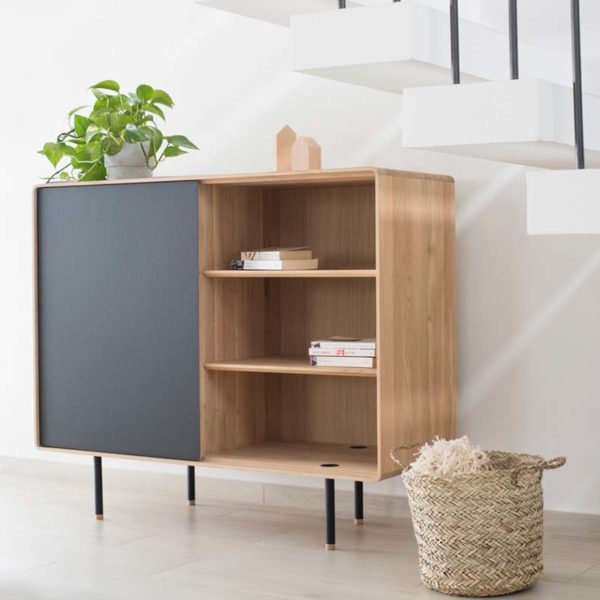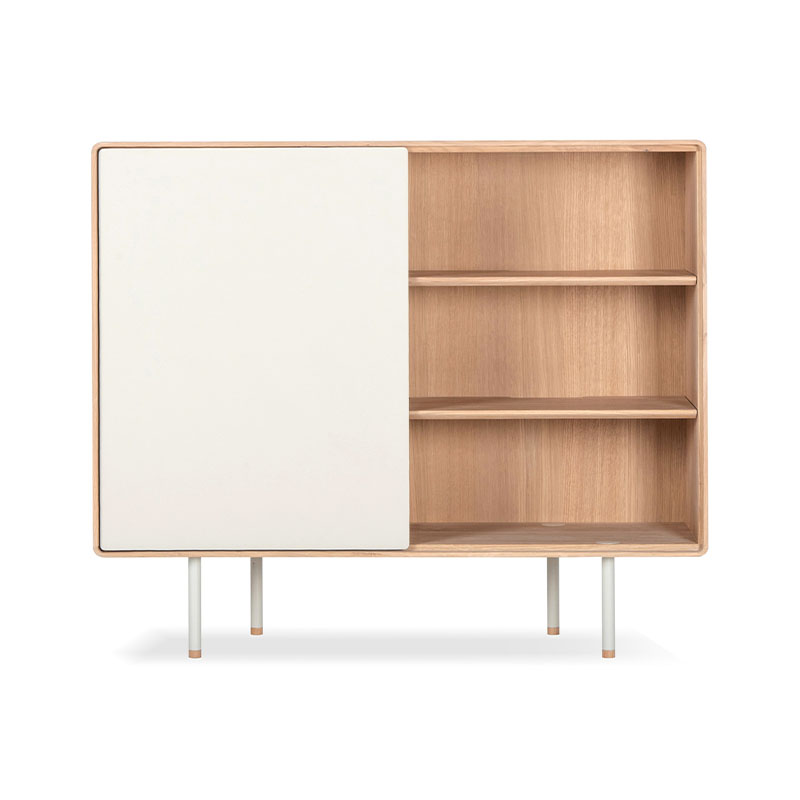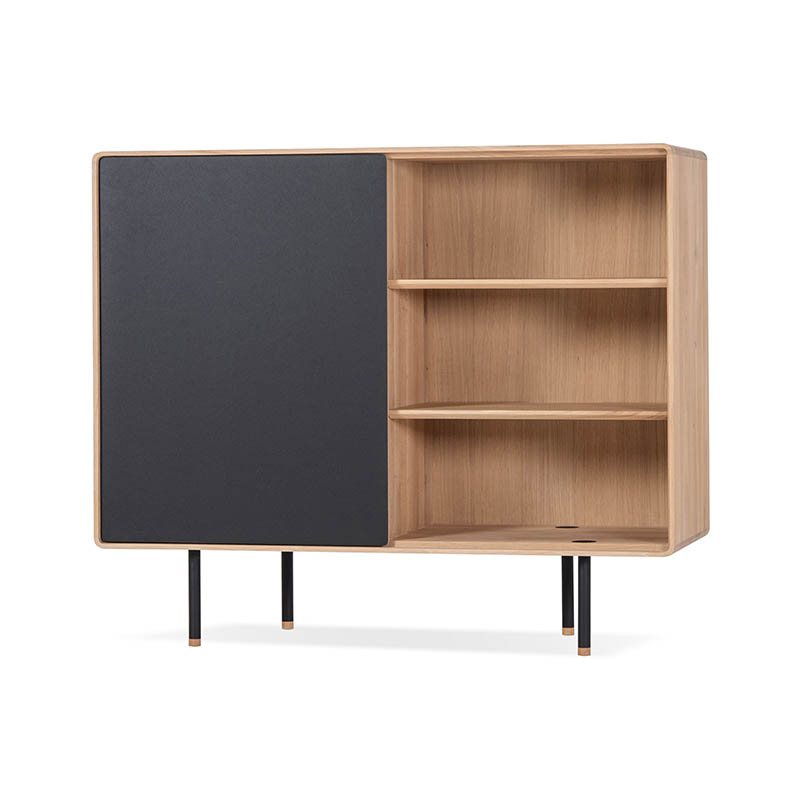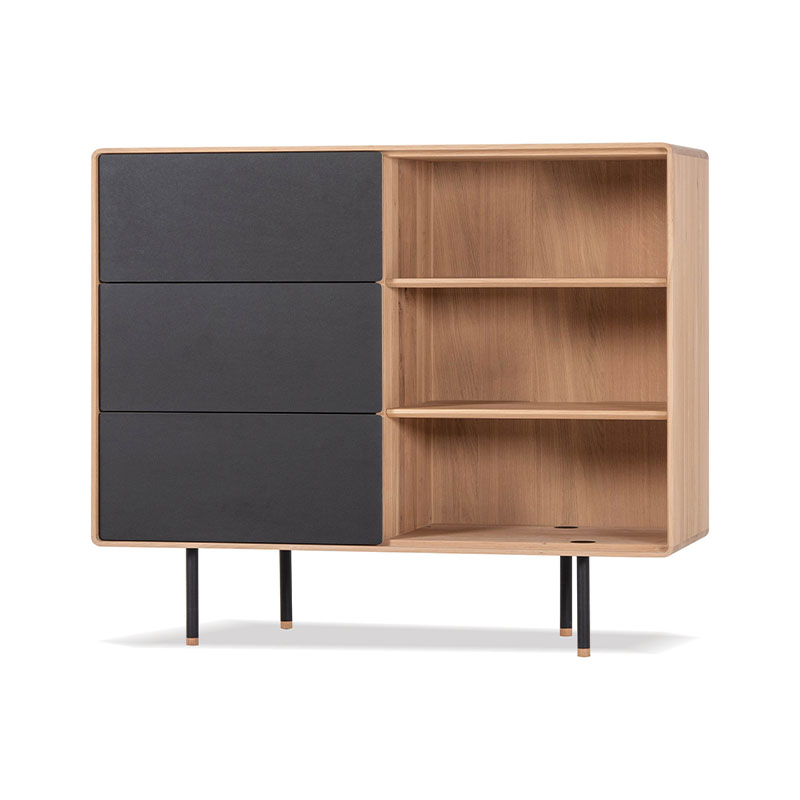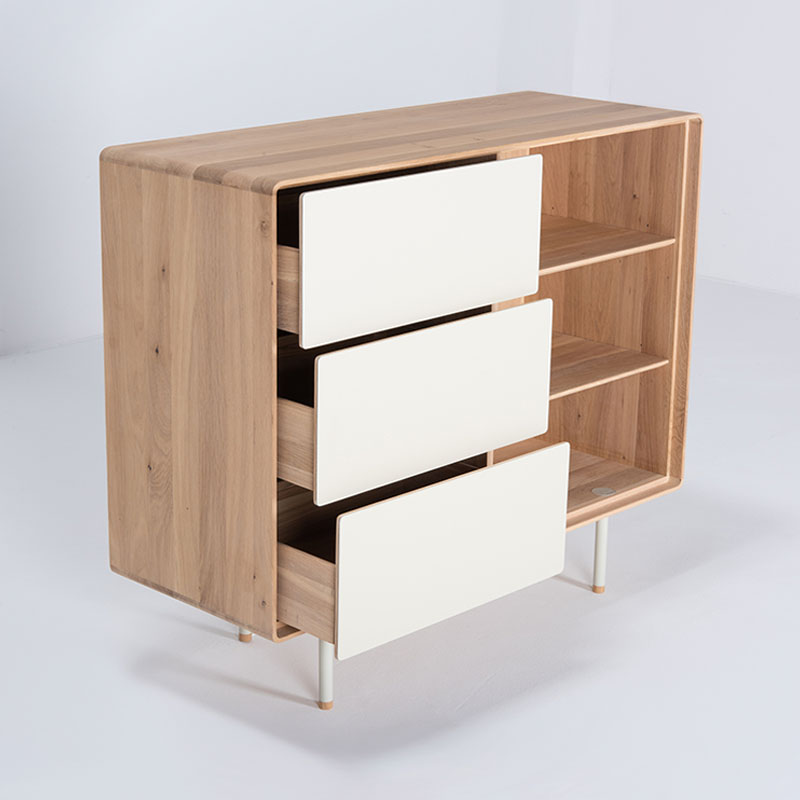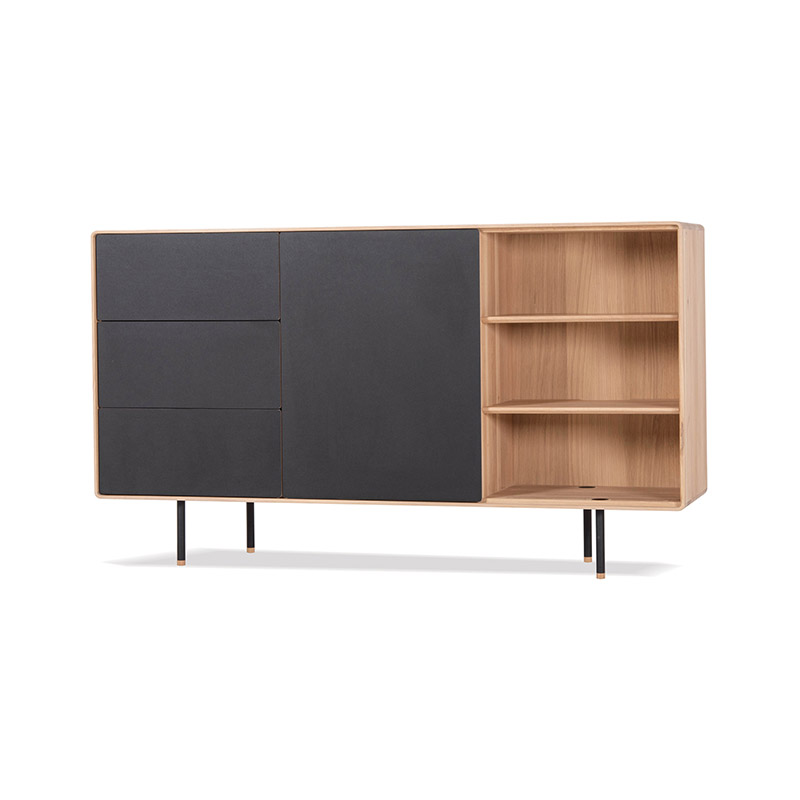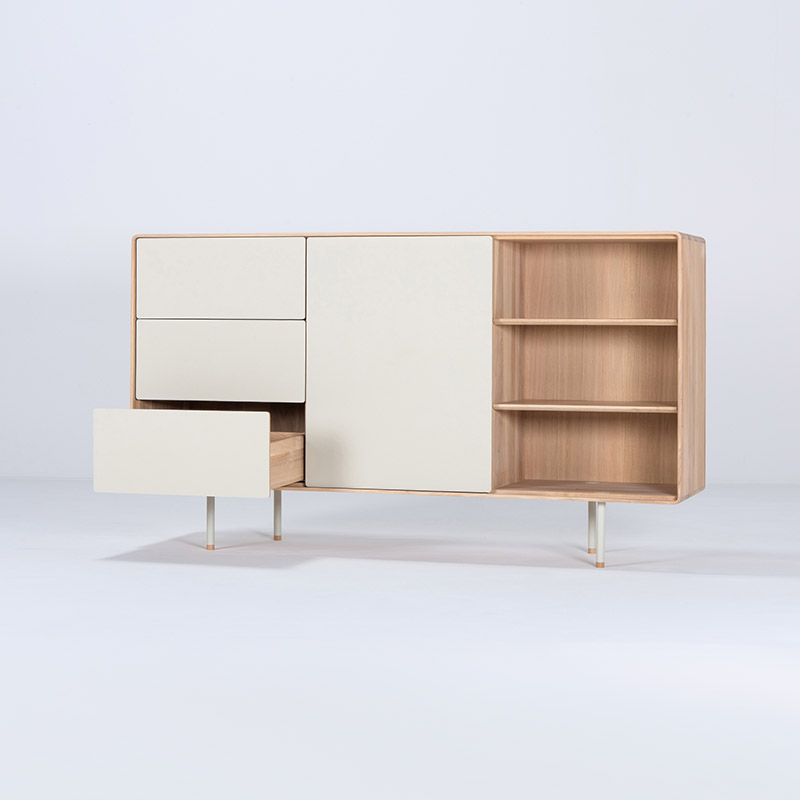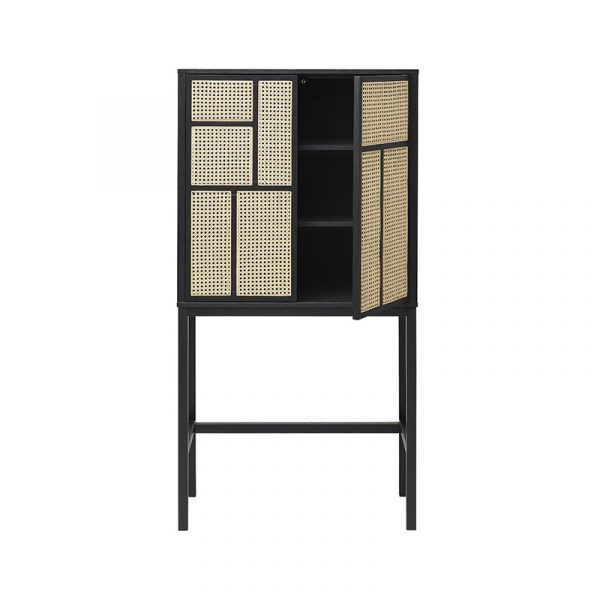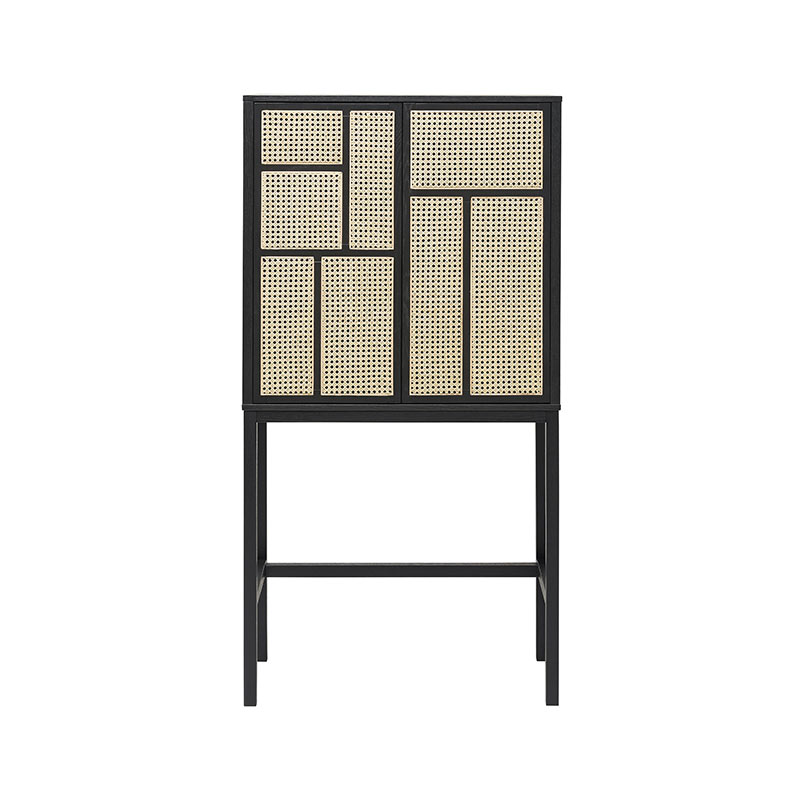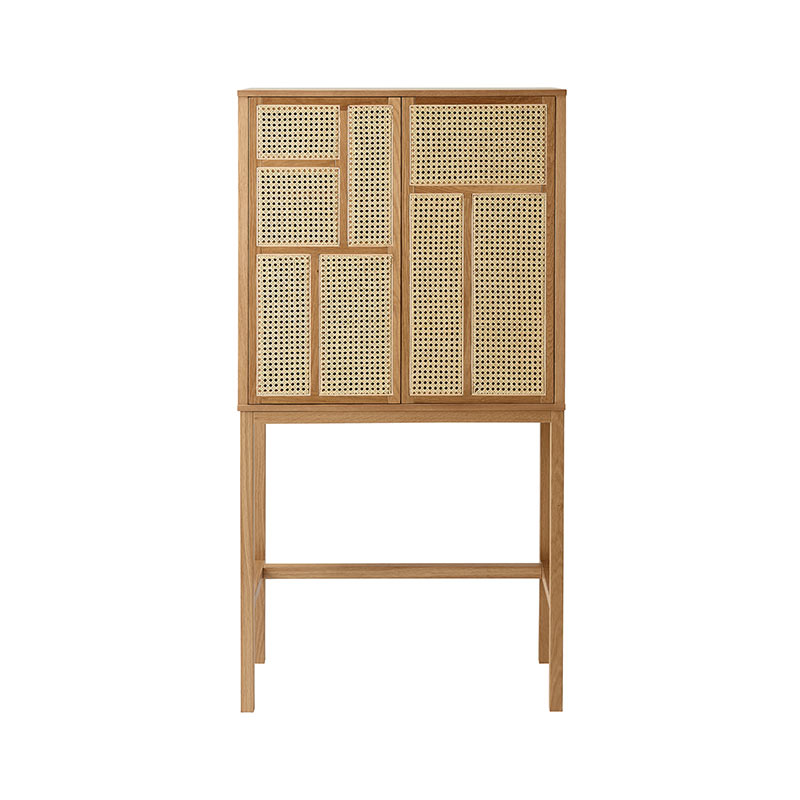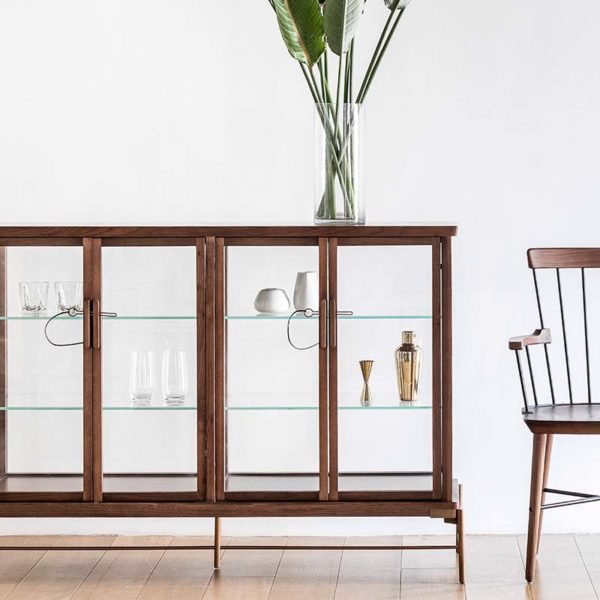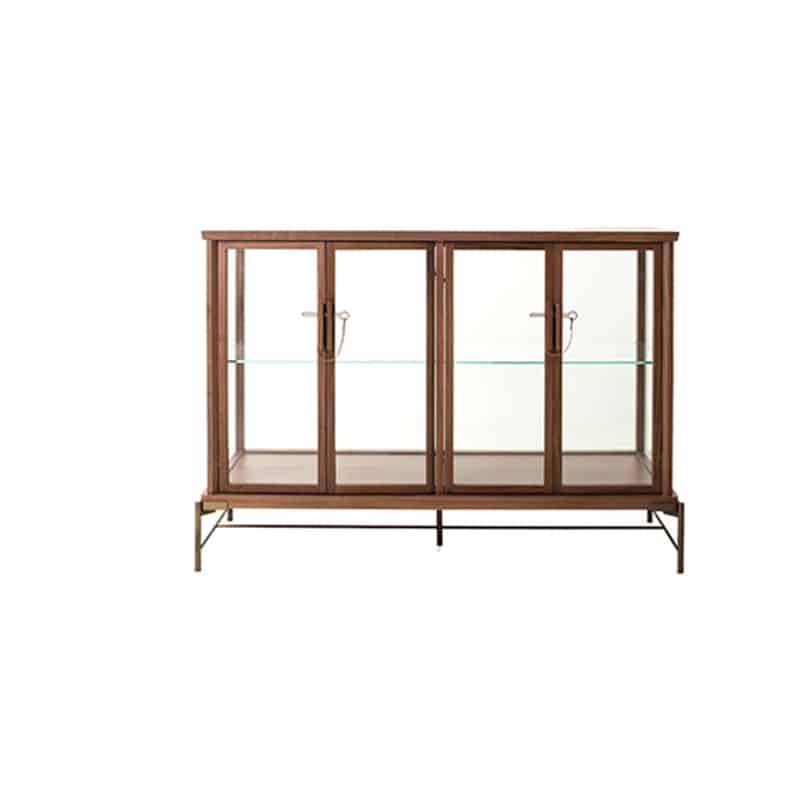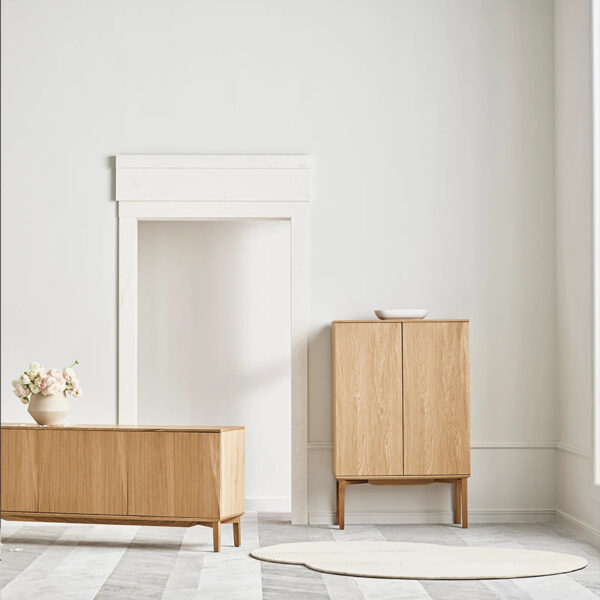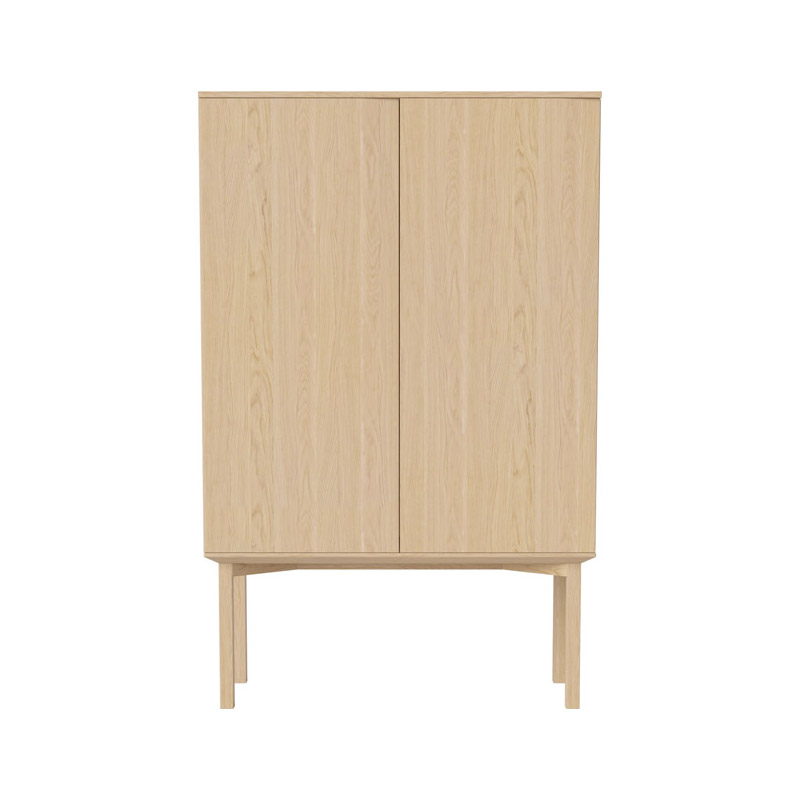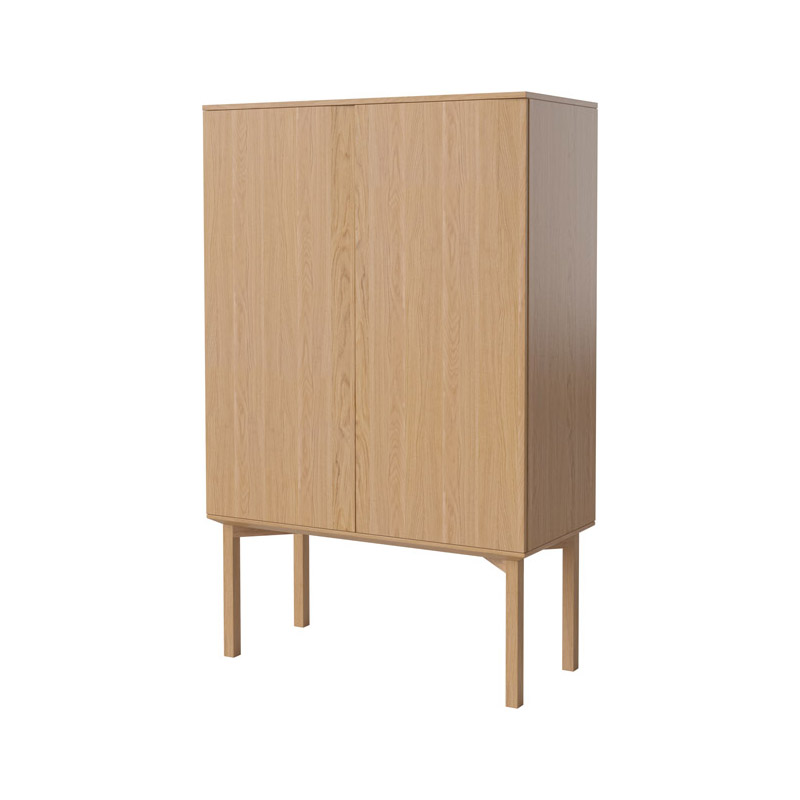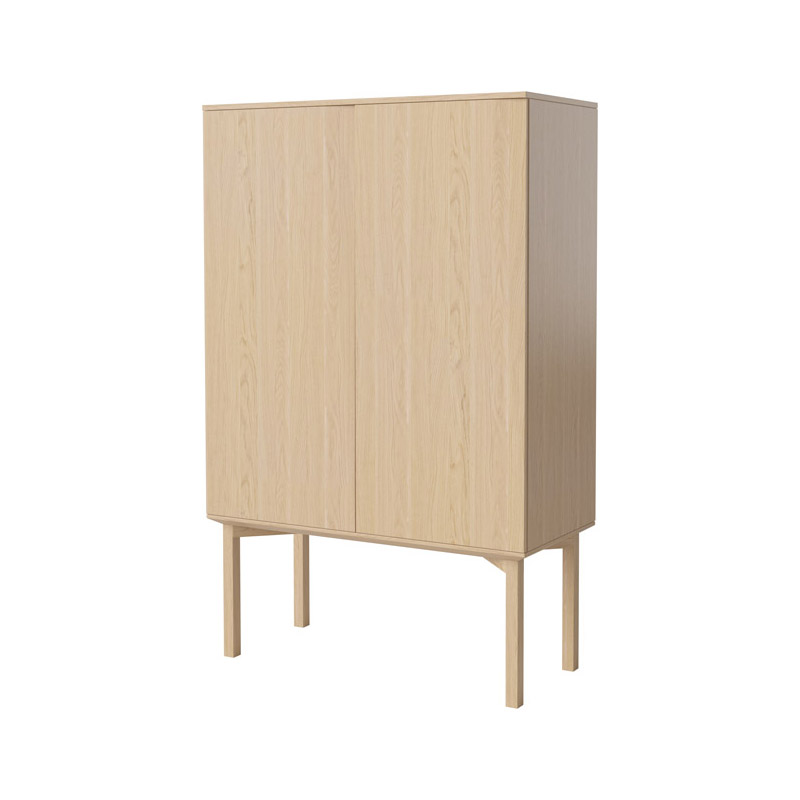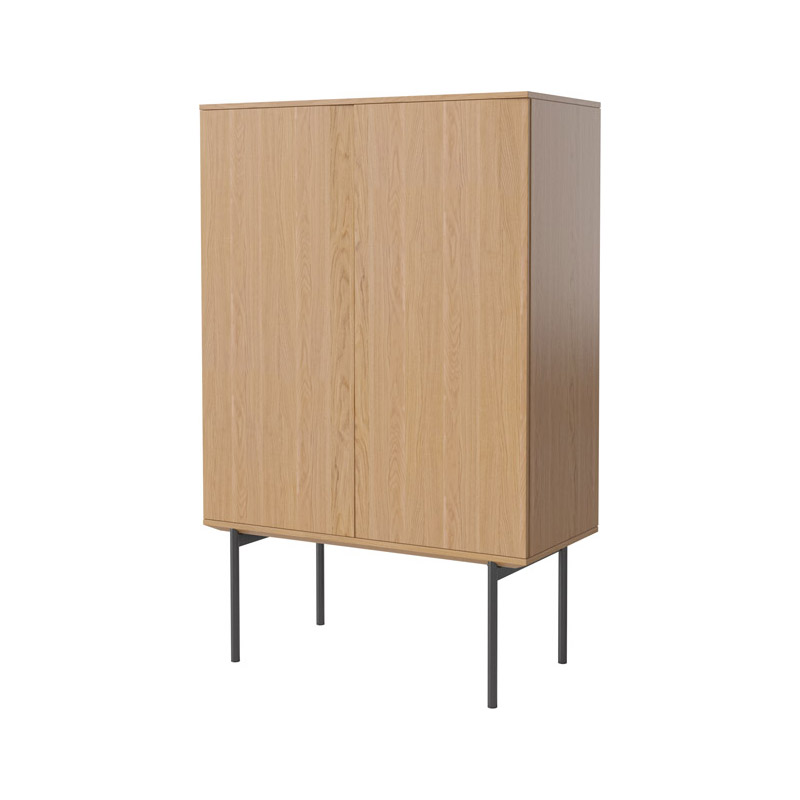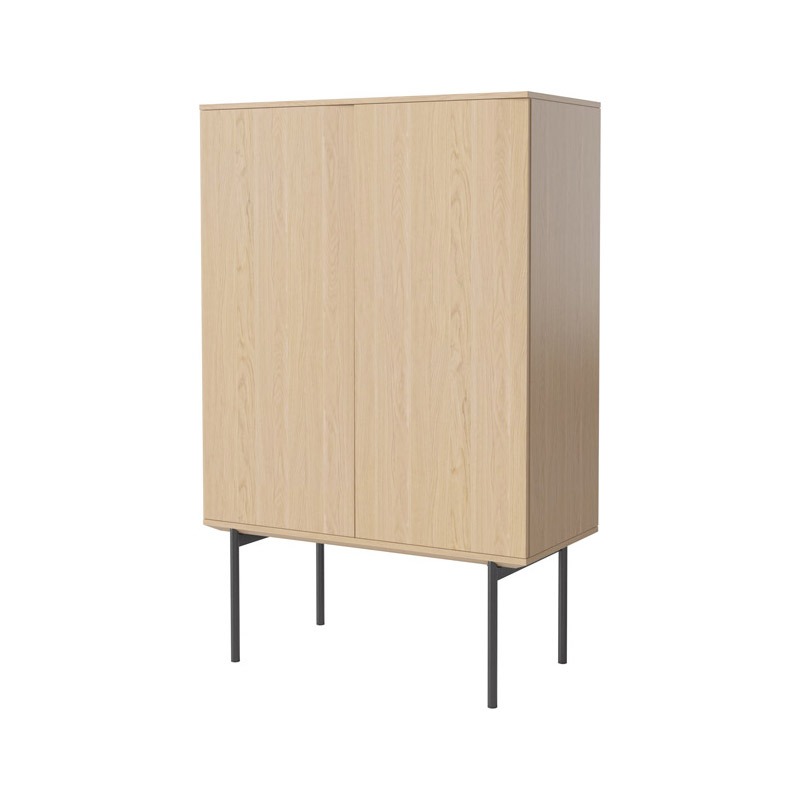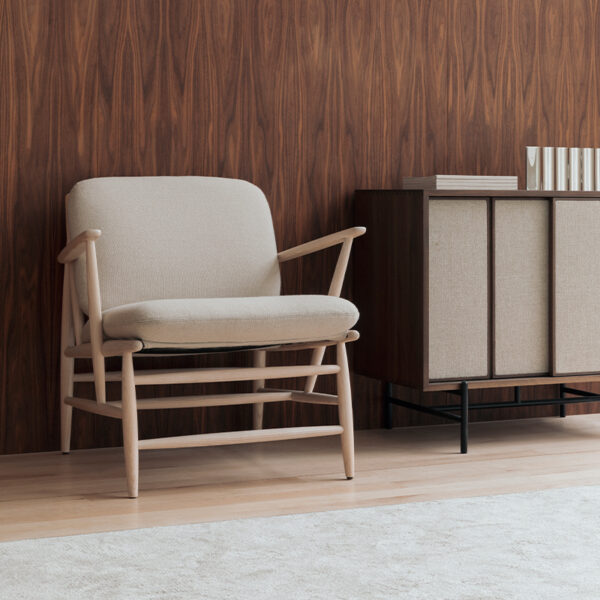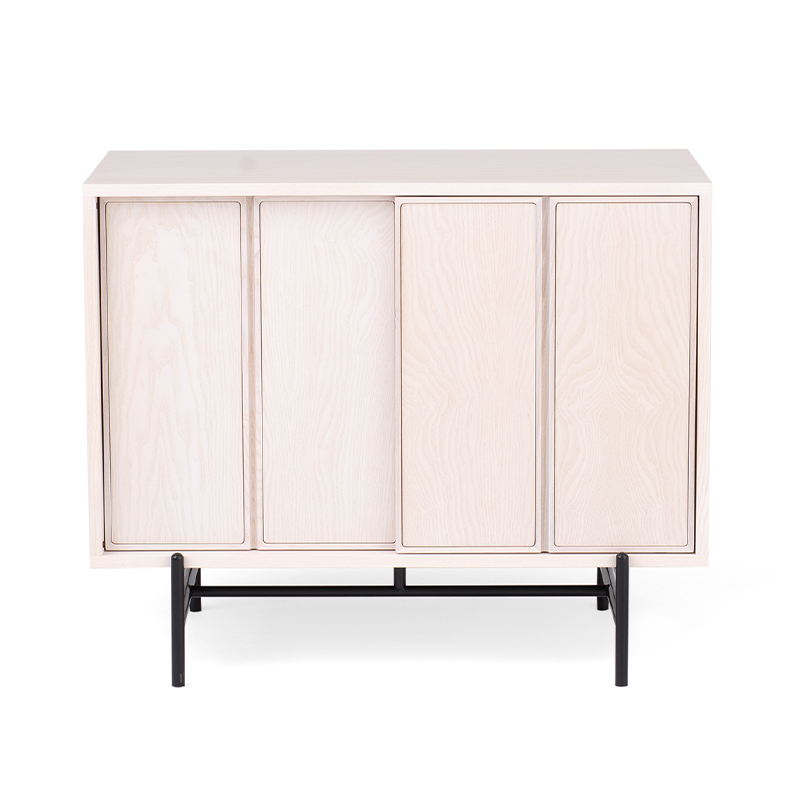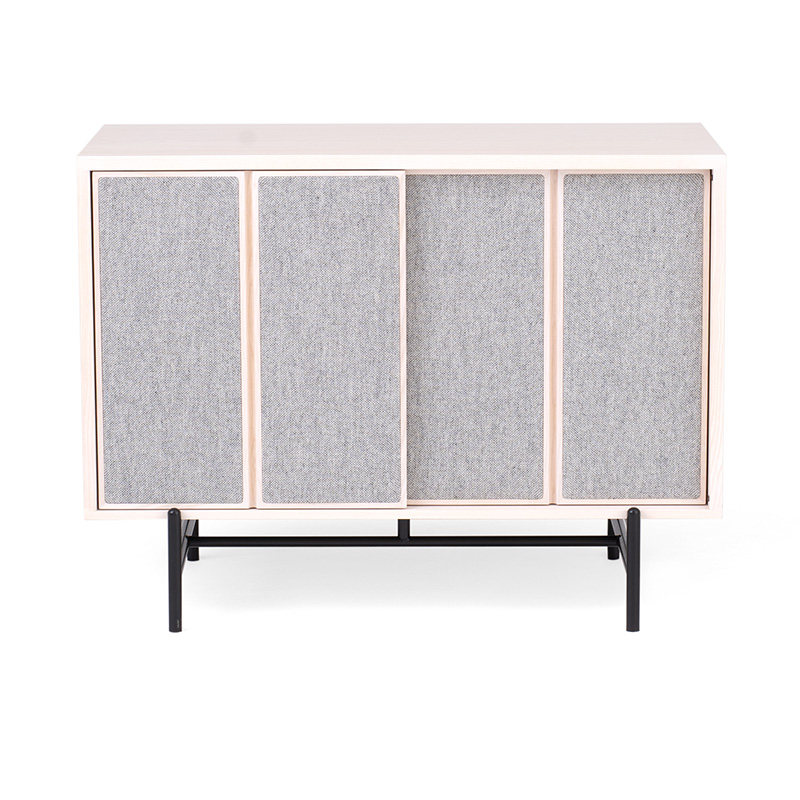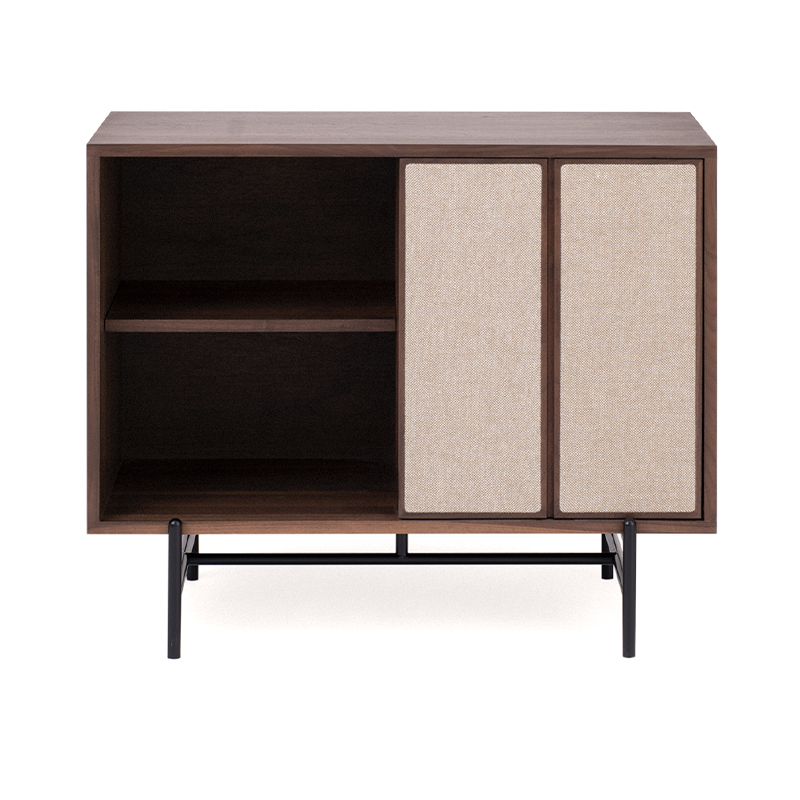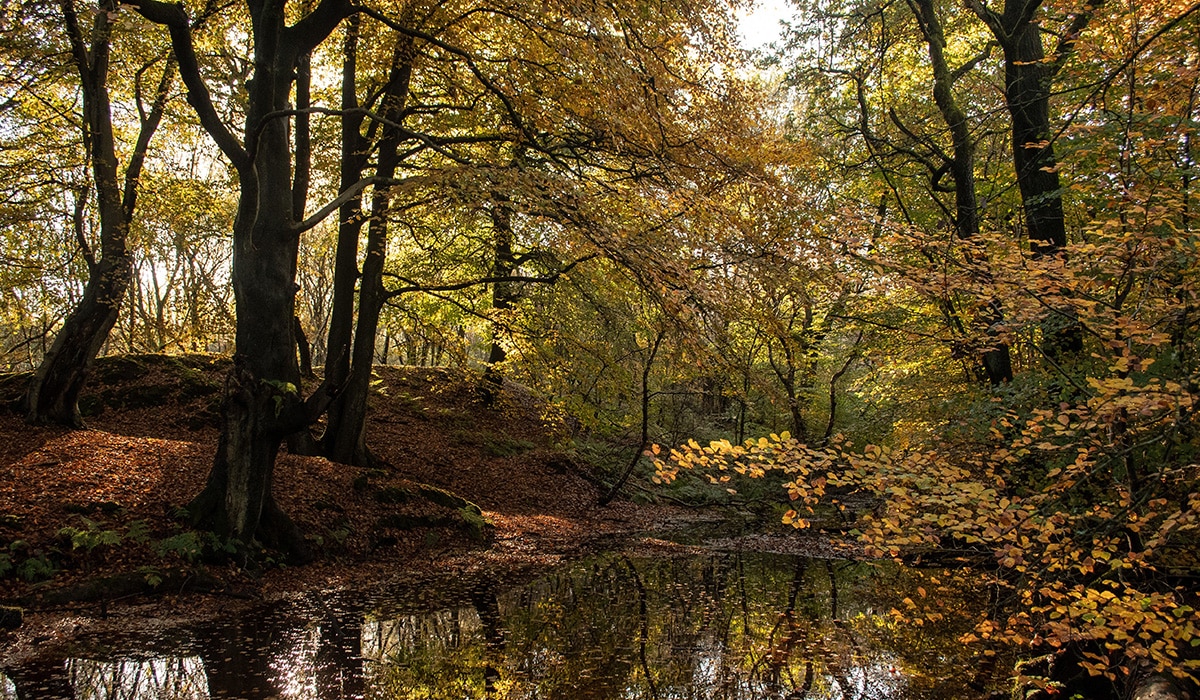
Scandinavian Design Principles
Scandinavian interior design transcends mere trendiness; it actively embodies simplicity, functionality, and a deep connection with nature. At Olson and Baker, we passionately advocate these principles, not merely adhere to them. Furthermore, our collection has evolved to echo the time-honored values of Scandinavian Modern interior design. In this exploration, we will delve into the ethos and evolution of this distinctive style.
Table of contents
- Nature’s Palette: The Nordic Influence in Design
- The Fabric of Tradition: Scandinavian Values in Design
- The Art of Simplicity: Deep Roots in Scandinavian Design
- Holistic Wellbeing: Design for Mind, Body, and Soul
- The Pillars of Scandinavian Design
- The Central Role of Wood in Scandi Style
- Emphasising Functionality: The “Less is More” Approach
- The Future of Scandinavian Design: Sustainable and Inclusive
Nature’s Palette: The Nordic Influence in Design
What truly characterises Scandinavian design is its symbiotic relationship with the Nordic environment. The rugged yet serene landscapes of Sweden, Denmark, Norway, and Finland, with their contrasting seasons, have profoundly influenced this design aesthetic. The climate’s demands have shaped a style that harmoniously blends functionality with natural beauty. This connection is palpable in iconic pieces like Alvar Aalto’s fluid Aalto Vase, the ergonomically designed 1-2-3 Chair, the organic forms of the Welle series, and the nature-inspired Beetle Chair too. Each piece is a testament to how Scandinavian designers have drawn inspiration from their immediate environment, transforming the ruggedness of the Nordic landscape into refined, organic design elements.
The Fabric of Tradition: Scandinavian Values in Design
The environment of scarcity and challenge has forged the principles of Scandinavian design. Barren landscapes and limited resources in the northern regions have historically cultivated a culture of frugality and efficiency. Consequently, this ethos translates into a design language that actively prioritises utility and sustainability. It reduces waste and embraces minimalism. Additionally, the Scandinavian way of life, embodying common sense and simplicity, plays a crucial role in shaping a design philosophy. This philosophy elegantly addresses universal problems with innovative solutions.
The Art of Simplicity: Deep Roots in Scandinavian Design
The phrase “form follows function,” though modernist in its origins, resonates deeply with the Scandinavian design ethos. This principle has been a guiding force in the region, influencing the development of objects that prioritise utility and simplicity. Also, the challenging Nordic environment necessitated the creation of functional and adaptive design, leading to innovations that balance aesthetic appeal with practicality.
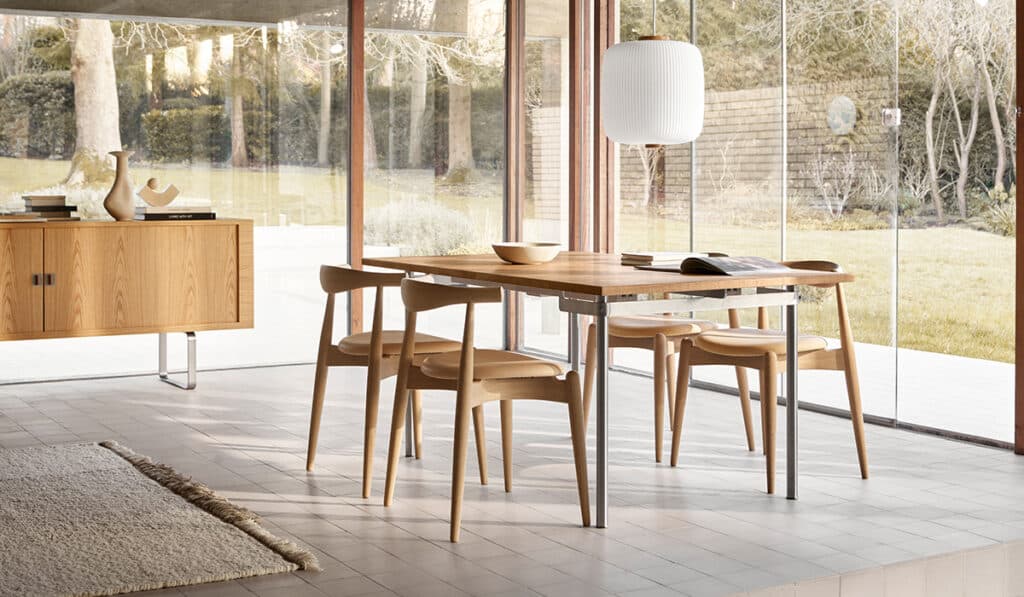
Craftsmanship and Continuity: Preserving Tradition in Modern Times
The industrial revolution transformed global manufacturing and design landscapes. However, Scandinavia’s late industrialisation allowed it to maintain a strong connection with traditional craftsmanship. Even today, craftsmanship is an integral part of Scandinavian living and design. This is evident in the enduring popularity of handcrafted Danish furniture, which continues to celebrate sustainable materials and time-honoured techniques. Lastly, the Scandinavian approach to design is both practical and resourceful. What’s more, praised for its straightforward and efficient methods in creating beautiful everyday objects.
Holistic Wellbeing: Design for Mind, Body, and Soul
One of the central concepts in Scandinavian design is the creation of spaces that nurture holistic wellbeing too. Rooted in a culture that values home and family, this design philosophy emphasises physical comfort and psychological warmth, particularly crucial during the long, dark winters. Scandinavian design’s focus on wellbeing is visible even in the minutest details, such as the hand-tied paper cord seat of a chair or its aesthetically pleasing form from all angles. This approach sets Scandinavian furniture apart from its contemporaries, like Bauhaus designs, by incorporating elements that are warm, with subtle colours, gentle textures, and patterns reflecting organic forms.
Embracing Inclusivity: The Evolution of Scandinavian Modern
Over the years, Scandinavian Modern design has evolved while staying true to its core values of nature and harmonious living. Its commitment to sustainability and environmental consciousness is more relevant than ever. Scandinavian design principles actively emphasise low environmental impact and prioritise the use of sustainable materials. Moreover, the design philosophy embodies a political stance that champions social inclusivity. Additionally, it embraces tolerance and liberalism, reflecting the cultural ethos of the Scandinavian region. Furthermore, the sparsely populated lands of Scandinavia, home to a privileged minority, influence a design approach that favours simplicity, understatement, and high-quality craftsmanship. This approach deliberately steers clear of over-embellishment, preferring a clear, uncluttered path in design evolution.
The Pillars of Scandinavian Design
Scandinavian design, recognised for its muted colour palette, natural lighting, modern furniture, decluttered spaces, wood accents, and greenery, is a testament to the “less is more” philosophy. Moreover, this design style is rooted in the functionality demanded by Northern Europe’s harsh winter. This offers a blend of textures, contrasts, and hues to create a sleek, modern, yet cosy feel. Also, the aesthetic is closely aligned with the Swedish concept of Lagom, which emphasises a balanced, harmonious environment.
Illuminating Spaces: The Role of Colour and Light
The Scandinavian colour palette strategically features whites, greys, and tans to counteract the long, dark winters. Additionally, the occasional use of bold colors injects character and depth into the spaces. Natural lighting also plays a pivotal role in Scandinavian design, enhancing the sense of space and infusing it with brightness and openness. Furthermore, the use of white walls and minimal window treatments maximises the impact of available light.
The Legacy of Danish Design: Modern Furniture’s Evolution
Kaare Klint widely recognised as the father of modern Danish furniture design, set the standard for the sleek, modern furniture found in Nordic rooms. His designs, typically marked by warm wood tones, gentle lines, and subtle curves, emphasise functionality and simplicity. This furniture style, particularly characterised by these features, reflects Klint’s influential design ethos.
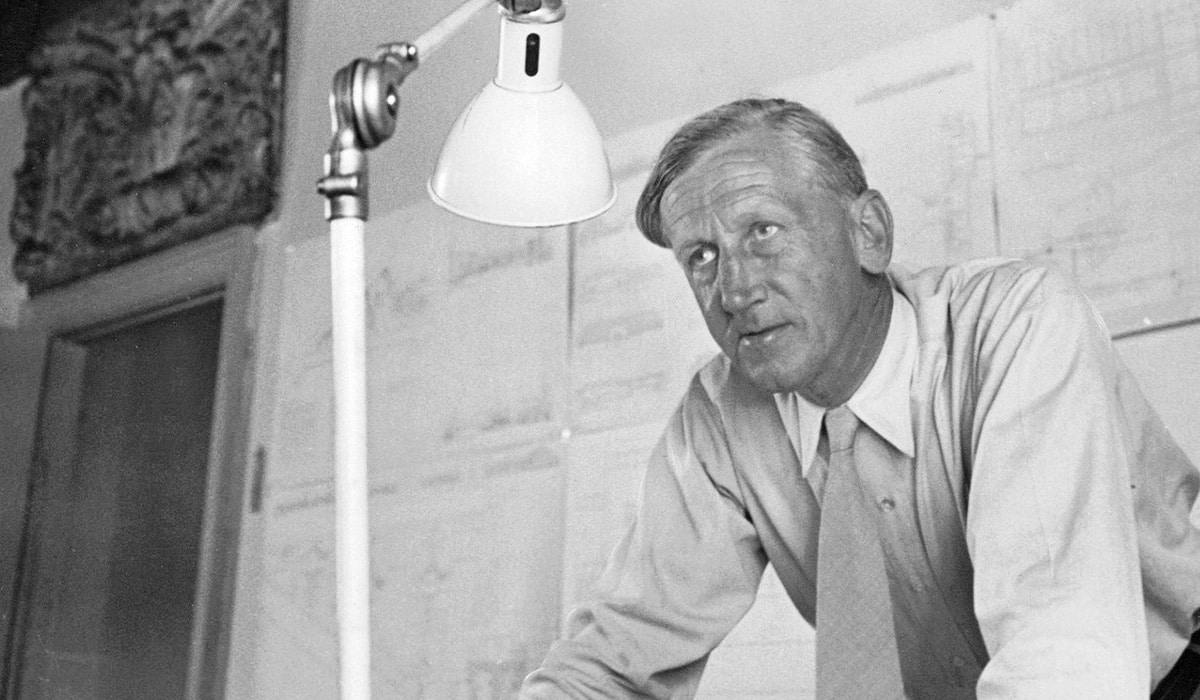
Minimalism at Its Best: The Decluttered Ethos
Originating from the compact living spaces of the 1950s and ’60s, Scandinavian design embraces minimalism. This approach avoids ornate details in favour of clean lines and smart storage solutions. This ensures that spaces are practical and aesthetically pleasing.
The Central Role of Wood in Scandi Style
Wood is a prominent element in Scandinavian design, used in flooring, wall accents, and furniture. It’s often complemented with textiles like sheepskin to soften and warm the space. Also, light woods such as beech, ash, and pine are preferred in Scandi style interiors. This is because of their ability to enhance the bright, airy feel of interiors.

Bringing Life to Spaces: The Integration of Greenery
Scandinavian design incorporates plants and flowers to add colour and vitality to spaces. This element of greenery reinforces the minimalist essence and connection to the natural world.
Emphasising Functionality: The “Less is More” Approach
Scandinavian design is distinguishable from Nordic design, which broadly encompasses cultural and design elements from Northern Europe. In contrast, Scandinavian design specifically prioritises simplicity and functionality, often leaving walls bare and spaces relatively uncluttered to emphasise this principle.
The Future of Scandinavian Design: Sustainable and Inclusive
Looking ahead, Scandinavian design continues to evolve with a commitment to sustainability and inclusivity. As the world faces environmental challenges, the principles of Scandinavian design offer a path forward that is both aesthetic and ethical. Its emphasis on minimalism, sustainable materials, and functional beauty makes it a leading choice for designers and homeowners alike.
Scandinavian design, firmly rooted in tradition and dedicated to simplicity and functionality, persistently inspires and evolves. It transcends mere aesthetics, offering a blueprint for a balanced, sustainable lifestyle deeply intertwined with the natural world.
“Only slowly does it dawn on people that modern furniture must be designed on the basis of practical necessities”
– Kaare Klint
Q&A on Scandinavian Design
Q: Why Is Scandinavian Furniture Widely Admired?
A: Scandinavian furniture blends functionality with aesthetic appeal, adhering to a ‘less is more’ philosophy and emphasizing sustainability, which aligns with modern eco-friendly values.
Q: What Benefits Does Scandinavian Interior Design Offer?
A: It creates an illusion of more space using minimalist designs with clean lines and natural materials, providing comfort without clutter.
Q: How Is Scandinavian Furniture Characterized?
A: It features minimalistic, clean designs focusing on functionality and beauty, characterized by simple lines and a clutter-free approach.
Q: What Sets Scandinavian Design Apart?
A: Its unique combination of minimalism, functionality, and aesthetically pleasing simplicity, originating from the 1950s, creates a calm, orderly environment.
Q: Why Does Scandinavian Design Embrace Minimalism?
A: It evolved as a practical response to the harsh Northern European climate, prioritizing functional, durable designs for comfort and efficiency.
Q: What Is the Philosophy Behind Scandinavian Furniture?
A: It values simplicity, functionality, and a connection to nature, focusing on minimalist design and sustainable practices for practical, elegant furniture.
< Back to all articles

